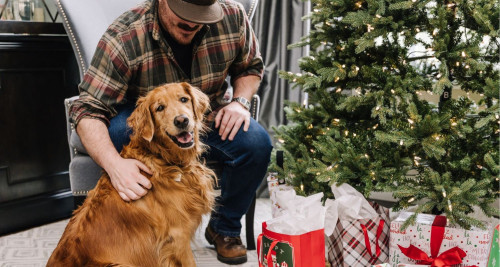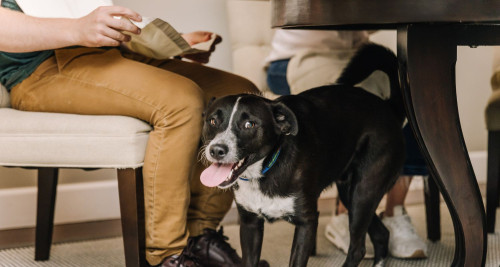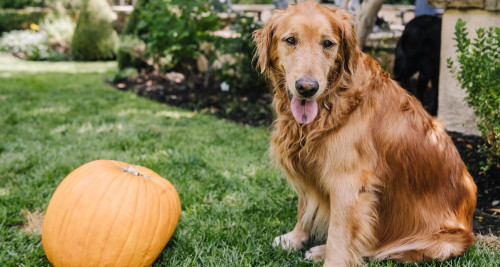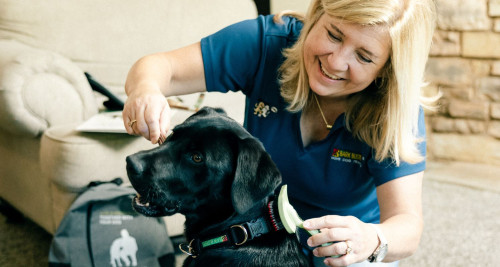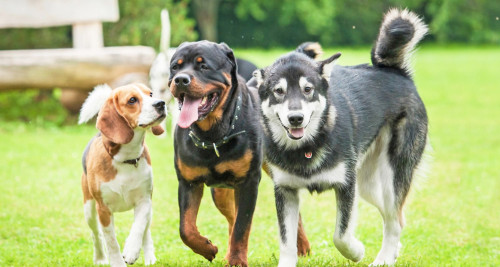Staffordshire Bull Terrier
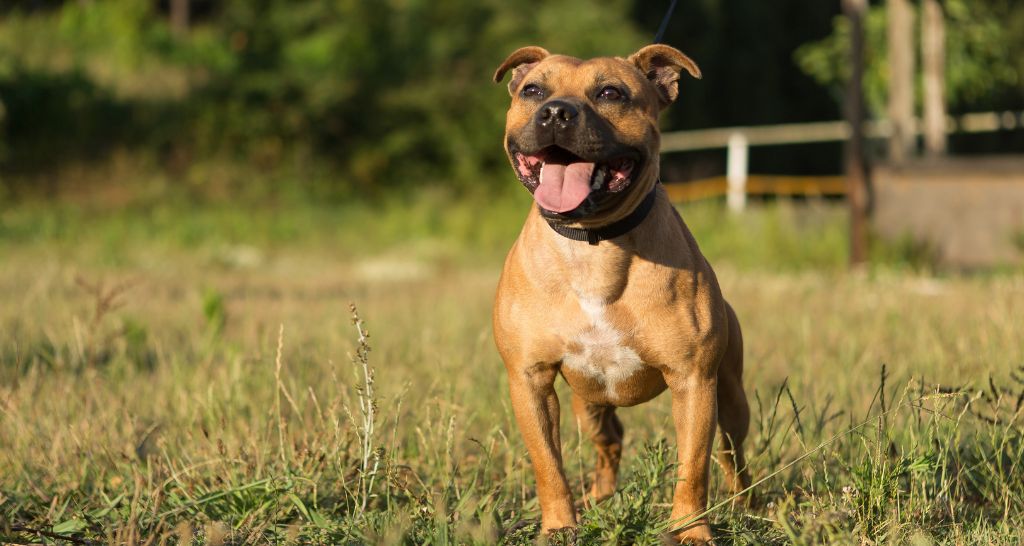
Breed Traits and Characteristics
According to the American Kennel Club, here are some breed characteristic you can find in Staffordshire Bull Terriers.
- Height
14-16 inches
- Weight
28-38 pounds (male), 24-34 pounds (female)
- Life Expectancy
12-14 years
- Coat Type/Length
Smooth/Short
-
100 affectionate with family
-
100 good with young children
-
60 good with other dogs
-
100 trainability level
-
80 energy level
-
60 barking level
-
40 shedding level
-
60 drooling level
History
The Staffordshire Bull Terrier originated in England and is a tenacious and courageous short coat breed. It was one of the breeds used for bull and bear baiting before the 19th century when sports such as cockfighting were common place and animal rights not yet fully in place.
As far back as the 16th Century, there was a common practice at the cattle markets to set dogs on the bulls and cattle as a way of tenderizing the meat and providing entertainment for the spectators. Fights with bears and other animals were also organized as entertainment.
Eventually the practice of these blood sports was phased out or eliminated in 1835 as animal rights organizations like the RSPCA came into being.
However, the practice of dog fighting still continued, where folks could test the fighting strength and courage of their dogs in secret locations. Dog fighting was a form of entertainment and involved gambling. These dog fights usually took place in a pit and the last dog standing was declared the winner.
Despite its violent history, the modern-day Staffordshire Bull Terrier is a breed that has the ideal temperament to be a family dog and trustworthy companion.
The early bull dogs and terrier types were remarkably different from the breeds of today and were selected mainly for their gameness, inbred courage and aggressiveness. Terriers and other popular dogs of the time, bred with bulldogs, provided the ancestral foundation stock for the Staffordshire Bull Terrier.
The Staffordshire Bull Terrier
The Staffordshire Bull Terrier is rated high on Bark Busters’ list of popular breeds, coming in as the 4th most popular trained breed in the USA, and 3rd in the United Kingdom, Canada, Australia and New Zealand
They are energetic, fun loving dogs and in great demand as the all-round family dog. Staffordshires are a very loving breed that want nothing more than to settle down for a cuddle with you after a fun-filled day. It is their sweet nature, their ability to romp and play and then cuddle and chill out, that keeps them near the top of the ‘most popular breeds list’ around the world.
This breed is generally over-exuberant in their display of affection and all Staffordshire’s possess that trait of squirmy jumping and licking as they greet their human when they arrive home. This is what most Staffie parents love about the breed, but it can be a turn off for those who can’t cope with the ‘rough and tumble’ behavior. With patience, education and training, they can be just as well behaved as any breed. They are definitely worth the effort.
The breed has a defined muscular appearance that can look intimidating, but their natural love of people shines through and wins everyone’s heart in no time.
The Staffie (as its affectionately referred to), is classed as a medium sized dog with a similar appearance to the much larger, more powerful American Staffordshire Terrier and American Pit Bull Terrier.
According to the American Kennel Club, the Staffordshire Bull Terrier is brave tenacious, a bit stubborn but also gentle, playful and clever. Authorities generally agree that the breed can be traced back to the Mastiff-like dogs through the old bull dog which, when crossed with British Terriers, produced the first ‘Bull and Terriers’. The old-fashioned bull dog was a fierce, courageous animal used in the spot of bears and bull baiting as early as the mid-sixteenth century.
Bark Busters Trainer Michael Konstantaras-Lower Coastal CT, on the subject of Staffordshire Bull Terriers.
As the owner of a female Staffordshire Bull Terrier and a male Pit Bull, I look upon the differences in the two breeds as follows:
My experience with owning and working with Staffies has been great. Although every dog has its own temperament and personality, I've found them to respond remarkably well to Bark Busters training. Smart, outgoing, and energetic. I'd describe them as being Porsches while the standard American Pit bulls being Jeeps.
Staffordshire Bull Terrier Breed Traits
Capabilities
The Staffordshire Bull Terrier is a tough breed of dog, full of confidence and self-reliance. Fun to have around and definitely capable of being a lap dog, they would love nothing more than to be with you wherever you are.
They possibly are not the world’s greatest guard dogs because of their love of people, but their looks can be a deterrent.
Although they are good with kids, always monitor their behavior and never leave dogs and children unattended.
Are you an outdoor enthusiast? They are a great hiking companion.
Do you have other animals? Staffies are good with other animals and dogs if introduced properly.
A very trainable and cooperative breed of dog.
Points of Interest
- Short hair and easy care coat
- Muscular, formidable appearance, rarely found in a medium-sized breed.
- All round fun-loving dog with an even temperament.
- Ensure that their over-exuberant personality can be brought under control. Dogs and kids must never be left alone unattended.
- Loyal and loving nature.
- Adaptable to most situations.
- Enthusiastic breed, very athletic-great companion for the fitness enthusiast.
- Outgoing personalities that can be prone to becoming easily excited.
- Great staying power, high energy levels and always ready to be active.
- Need lots of entertainment and brain stimulation.
- They are known to play rough and can hurt you just through their play.
- Barking from excitement can be an issue, but usually easy to control.
- Very capable of doing things that the larger breeds can do.
- Naturally friendly towards most strangers, but capable of protecting you if the need arises.
- Common issues are mild dog aggression, walking issues and over-exuberance.
Personality & Temperament
Anyone who has a Staffordshire Bull Terrier will tell you that they adore this breed. They are lovable, adaptable and very trainable. They are a great family dog that loves to join in any activity.
Don’t let their looks fool you – although they look tough on the outside, they are sensitive, loving and very low maintenance. These dogs are very trainable and Bark Busters training methods suit their intelligent personality and we find them very trainable and quick to learn.
Although very trainable, they do need training, so that the energetic energy they possess is channeled in the right direction.
Don’t leave your Staffordshire Bull Terrier puppy confined for long hours because they don’t do “Home Alone” too well; they can become frustrated and behavioral issues could surface. These dogs love company and need to be kept active.
Create a place in your home that contains everything your Staffie will need for those times when you need to leave him alone.
Bark Busters Trainer Donna Ryan on the Staffordshire Bull Terrier
The Staffordshire Bull Terrier is a very adaptable and trainable dog. They just want to please and are always full of energy. However, you do need to have patience when training, or their fun-loving personality can wear you out. They always seem to be ready for the next big thing and keeping their full-attention is always challenging.
The over-exuberance in Staffies (jumping nipping and barking) is one of their best and worst traits. They need their owners' and people they meet, to always keep calm and ignore them until they are calm. They are a very soft natured dog, so they go from manic to submissive in a second.
Staffies tend to be over-zealous with other dogs. A lot of their excitable behavior with other dogs ends up with them humping the other dog, and because they are so strong, this can cause problems with other dogs. The other dog will try and get away, but the Staffie holds tight and this invariably leads to a fight.
Staffies like to play fetching games. So spend some time teaching them to bring their ball back, hiding their ball and sending them to find it.
I find that by keeping the exercises short and fun, they stay focused on what I am trying to teach them.
"Positive-only" dog training is a big fad right now. Treats can be great motivators for training Staffordshire Bull Terriers, but if your dog will only obey for a treat and you need to have treats always on hand to get the best out of your dog, then the dog is in charge of things, not you and this is not conducive to controlling a lively, energetic breed
I find that ‘communication’ built from consistent education, is the key because we always have our voices with us and as long as you keep the sessions short, you will get great results from this breed.
Case Study -Clancy-6 year old Staffordshire Terrier
Behavioral issue: Dog Aggression, pulling on the leash and general disobedience.
His human parent told us that ‘Clancy’ started out as a fun-loving puppy, a well-adjusted puppy who loved all dogs. She told us that she could not wait to take him to the ‘dog park’ and show him off to all the other dog parents there, but she had to wait for him to have his shots and be cleared by the vet before she could take him.
Before his training, a side issue from his dog aggression was his leash manners. He would pull her down the street and she was just along for the ride.
His first day at the dog park went okay, there were just a few small dogs and one puppy there. They all seemed to hit it off. Clancy was the life of the party and played until he dropped.
Then one day as she entered the park with her excited little charge dragging her through the gate, a large dog pounced on him and knocked him flying. Clancy screamed in shock and tried to get away, but the big dog kept persisting. It was obviously the King of the Park and wanted Clancy to know that he had no ranking at all.
The next time they visited the dog park, Clancy refused to get out of the car. Visits to the ‘dog park’ where then completely halted, but as Clancy grew he started to become aggressive to all dogs the moment he saw them.
Success at First Lesson: Clancy’s human mom called Bark Busters.
We were able to stop Clancy’s dog aggression at his first lesson and he also learned quickly not to pull on his leash and to walk sedately at his human’s side and to listen. Who said you can’t teach and old dog new tricks?
Our methods are dog-friendly and are based on the natural way that dogs communicate. We teach you how to Speak Dog and earn your dog’s respect, with kind and dog friendly methods.
Training Your Staffordshire Bull Terrier
The Right Training for Your Staffordshire Bull Terrier
‘Staffies’ are keen to please their human and will play the clown or the serious role with ease. Most behavioral issues in relation to ‘dog aggression’ stem from their unwillingness to walk away from a fight that they generally didn’t start and the inability of their owner to control this behavior.
The most prevalent behaviors we are called upon to deal with are dog aggression, biting the leash during the walk, excitable behavior and a small amount of human aggression, which usually stems from poor breeding or lack of training.
More often than not, their pet parents do seek out professional training to deal with their over-exuberance.
Savvy dog fanciers understand the importance of locating the right training for their Staffie; a training that is kind and humane, dog friendly and taught by experts who have the skills to deal with their particular breed.
People who lead hectic lives find that Bark Busters in-home dog training suits their lifestyle. Why in-home? Because this is where most problems occur, this is also where dogs feel safe and have fewer distractions. The modern-day dog parent is looking for fast results without having to use any harsh methods.
We have mentioned the common behavioral issues and traits of the Staffordshire Bull Terrier that are easily addressed with consistent education and training. They are not the type of breed that wants to constantly test you.
Grabbing the leash
This is an issue that does occur regularly with this breed and generally stems from either frustration on the dog’s part or a learned behavior from when it was a puppy and was first introduced to the leash.
Most Staffies stop this annoying behavior if it is addressed properly and at the precise time that your dog is grabbing the leash.
Be sure you don’t turn the exercise into a battle of wills or the dog will win. You have to be in control and let your dog know that this behavior is not acceptable
Freeze your actions and clap your hands at the precise moment your dog opens its mouth to grab the leash.
Do not hit, try to grab your dog, or drag the leash out of your dog’s mouth. Neither of these actions will build trust. Be patient and in control.
Dog Aggression
Because of its breed history, the Staffie is not one to walk away from a fight. It is not usually the first one to start a fight, but has been known to finish the odd one or two.
Most of the dog aggression Bark Busters encounters stems from a ‘bad experience’ that the dog has had as a puppy or adolescent.
Let your dog know that you are the boss and take control if it displays any aggression. If you find yourself in over your head, seek professional help.
Recall - Come when called
The Staffie is generally not deliberately disobedient. We usually find that its inability to ‘come when called’ stems from a lack of proper communication. Practice calling your dog on leash first, and in a controlled environment or fenced area, then let the leash trail on the ground and call your dog to you in a pleasant and encouraging way. Staffies need to understand your intentions and what you want from them or they will just bound away to investigate more interesting things.
Over-Exuberance
Over-zealous behavior is synonymous with most Staffordshire Bull Terriers. If you want to quell this over-exuberant behavior, practice some calm interaction with your dog. Don’t turn on your ‘excitement meter’ when you arrive home, enter the home and interact in a calm way. The worst thing you can do with an excitable breed is to act in an excitable way. They will just match your behavior and ramp it up.
If you are determined to take your dog to a doggy park, we recommend that you wait until they have reached 12-months of age. The concern about dog parks is the natural intimidation that older dogs display when they encounter puppies. This can give your puppy a lasting bad impression, which can later lead to dog aggression as your puppy reaches maturity.
The areas where scuffles and ‘power plays’ usually occur is near the entrance to the dog park, where the established dogs like to check out who is requesting entry to their domain.
Staffies are not the type of breed to take a backward step if another dog provokes them. This could cause you long term problems and mean that your dog never gets to go back to the park for fear of fights with other dogs. So be patient and let your dog mature first and allow it to develop a trust that it does not have to worry about other dogs when it goes out.
Even other puppies can bully and intimidate your dog, so don’t rush off to a dog park. Let your puppy enjoy pleasant experiences with well-behaved dogs or puppies.
If fully immunized, you can sit with your puppy on your lap in a public area or park, where it can watch the world from a safe place. This way it won’t be intimidated or frightened by over-exuberant mature dogs or other puppies.
Connect with Us!
Need help training your Staffordshire Bull Terrier? Call 1-877-500-BARK (2275)or enter your zip code.
Staffordshire Bull Terrier Health
Common Illnesses and Injuries
Your Staffordshire Bull Terrier’s health concerns will change over the course of their life. A puppy might be more prone to eat something they shouldn’t, a 2-year-old Staffie may be more likely to develop allergies, and a senior Staffie is far more likely to develop arthritis as they age. Staffordshire Bull Terriers also have personality and physical traits that may make them more prone to certain conditions—an active Staffie that loves to run around the yard may be more prone to rupturing their knee ligament.
At any stage of life, there are some of the most common injuries and illnesses you should be aware of when bringing home a Staffordshire Bull Terrier:
- Cataracts and eye problems
- Hip and Elbow Dysplasia
- Joint Problems
- Cruciate Ruptures
If you are ever concerned about your dog’s health, your local veterinarian is a great resource.
Genetic Health Concerns
Like many popular breeds, the Staffordshire Bull Terrier has its fair share of hereditary based issues, such as hip and elbow dysplasia. Most reputable breeders now have their breeding stock checked and scored by a vet for these hereditary ailments. You can request proof that the puppy you are purchasing comes from parents that have been checked for these issues
Because many other health issues are also hereditary, you should do some research on the ancestry of your puppy and any health issues of that particular breed.
Tips for Every Dog Owner
Hear from Bark Busters Clients Who Have a Staffordshire Bull Terrier
Struggling With Your Staffy’s Behavior? Submit Our Form to Find the Training Support You Need!
Enter your zip code and finish the short form. We’ll connect with you within 24 hours to talk through your dog’s training goals. Get the one-on-one support of in-home training and avoid group class frustrations.
- 99.7% 4 or 5 stars 99.7% rate their experience with Bark Busters as 4 or 5 out of 5 stars.
- 99.6% Would Recommend 99.6% would recommend Bark Busters to their friends and neighbors.
- 99.5% Dog Responded 99.5% think their dog responded well to the training.
Need Dog Training Assistance with Your Staffordshire Bull Terrier? Find Your Local Trainer Now!
CALL TODAY 1-877-500-BARK (2275)
